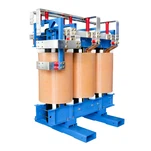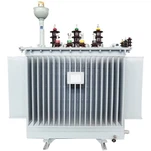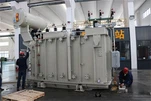1. How Electromagnetic Interlock Works
The electromagnetic interlock system typically consists of the following components:
Electromagnetic Coil: Generates a magnetic field when energized, which drives the mechanical locking mechanism.
Mechanical Lock: Physically locks or unlocks the operational mechanism (e.g., switches, disconnectors).
Control Circuit: Monitors the transformer's state (e.g., voltage, current, temperature) and controls the electromagnetic coil's operation.
When the transformer is in an unsafe state (e.g., energized, overheated, or faulty), the interlock system activates, locking the operational mechanism to prevent unauthorized or unsafe actions. The interlock is released only when safe conditions are restored.
2. Key Functions of Electromagnetic Interlock
a. Preventing Misoperation
The interlock prevents operators from accidentally operating switches or disconnectors while the transformer is energized, reducing the risk of electric shock or short circuits.
b. Ensuring Correct Operation Sequence
In complex operational procedures, the interlock ensures that steps are performed in the correct order. For example, it prevents disconnecting a load before de-energizing the transformer.
c. Protecting Equipment
In case of faults (e.g., overcurrent, overtemperature), the interlock locks the operational mechanism to prevent further damage to the transformer.
d. Enhancing Safety
By enforcing a locking mechanism, the interlock protects operators from hazards such as electric shock or arc flashes caused by improper operations.
3. Applications of Electromagnetic Interlock
Electromagnetic interlocks are widely used in transformers and related equipment, including:
High-Voltage Switchgear: Prevents operation of disconnectors or grounding switches when the transformer is energized.
Transformer Room Doors: Locks the doors of transformer rooms when the transformer is in operation, ensuring personnel safety.
Load Switching Devices: Ensures load switching operations are performed under safe conditions.
4. Advantages of Electromagnetic Interlock
High Reliability: Based on electromagnetic principles, the system responds quickly and operates reliably.
Forced Protection: The mechanical locking mechanism ensures that unsafe operations are physically prevented.
Flexibility: Can be configured to activate based on various conditions (e.g., voltage, current, temperature).
Easy Integration: Can be integrated with automation systems for remote monitoring and control.
5. Implementation of Electromagnetic Interlock
a. Mechanical Interlock
Uses an electromagnetic coil to drive a mechanical lock, directly locking the operational mechanism.
b. Electrical Interlock
Uses control circuits to implement logical interlocks, such as cutting off power to the operational mechanism under specific conditions.
c. Smart Interlock
Combines sensors and control systems to enable intelligent interlocking. For example, temperature sensors can trigger the interlock if the transformer overheats.
6. Design and Installation
Design Principles: The interlock system should be designed based on the transformer's operational and safety requirements.
Installation Location: Typically installed near operational mechanisms (e.g., switches, disconnectors) to ensure effective locking.
Testing and Commissioning: After installation, the system must be tested to ensure proper functionality.
7. Maintenance of Electromagnetic Interlock
Regular Inspections: Check the electromagnetic coil, mechanical lock, and control circuit for proper operation.
Cleaning and Lubrication: Keep the mechanical lock clean and lubricated to ensure smooth operation.
Fault Troubleshooting: Promptly identify and fix any issues with the interlock system to maintain its reliability.
Conclusion
The electromagnetic interlock on transformers is a vital safety mechanism that prevents misoperation and ensures the safety of both equipment and personnel. It is widely used in high-voltage switchgear, transformer room doors, and load switching devices, offering high reliability, forced protection, and flexibility. Through proper design, installation, and maintenance, electromagnetic interlocks significantly enhance the safety and reliability of transformer operations.










